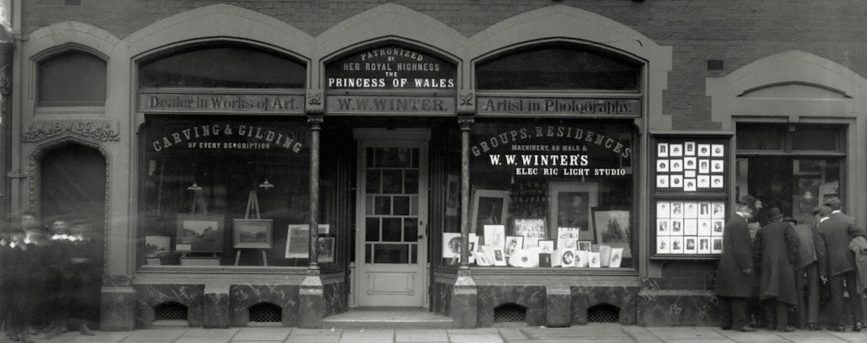This week Joanna talks about some of the processes of researching the images for the Trust:
Hope everyone is coping with the lockdown. Thank goodness for the internet which enables me to carry on with research. Also I have been through my Winter’s notes and put things in some sort of order, tied up some loose ends and reminded myself of things I had forgotten.
Apart from cleaning, sorting and recording, one of the most interesting things that I do is finding out about the stories behind the prints and negatives. I have always been interested in the development of Derby and family history, so having the opportunity to look at old photographs I was in seventh heaven. A quote from the Derbyshire Post of July 1885 sums it up in better words than I can. The words were written by a reporter who was making a tour of the Winter’s premises after a major building programme after the fire of 1883.
‘’….the plate when printed goes to a negative room to be added to the 50,000 other plates there. Here they are ticketed and laid aside till fate requires them. If each one could tell the tale of why it came to be there, many an interesting history could be told; tales of happiness, woe, love or disappointment….’’
When researching a print or plate it is mainly a matter of looking for clues – who, when, what, why, hence the importance of looking at all the information that you can gather from the print/negative and the bag that it might be in however intelligible it may seem at first. The negative number will give an approximate date; names are usually written on the negative and often on the bag. Prints often have the negative number written on the back, then it is a case of what you know personally or what you can find in a book or on the internet. The recent find of the name of the rower Orlando Meakin is a good example. The name on the bag was easily read as ‘Meakin’ the initial was a squiggle. Looking through newspaper articles and finding an O. Meakin rowing in the approximate year. The ancestry website led to an Orlando Meakin. And then, the researcher’s dream, a newspaper article of his obituary filled in the details. It is like a big newspaper puzzle, trying to relate one piece of information to another and hoping it will fall into place. I hasten to add that it is not always as successful as that one, luckily the name was unusual.
